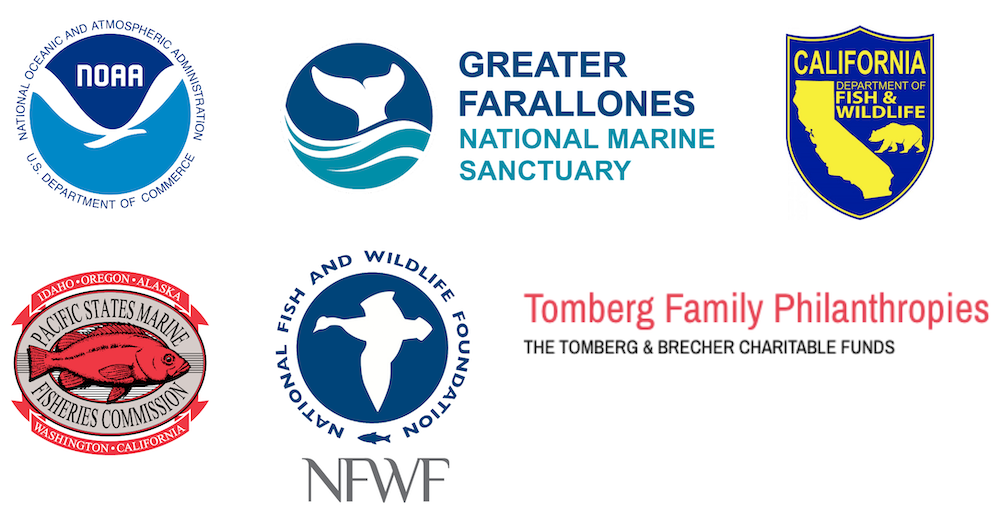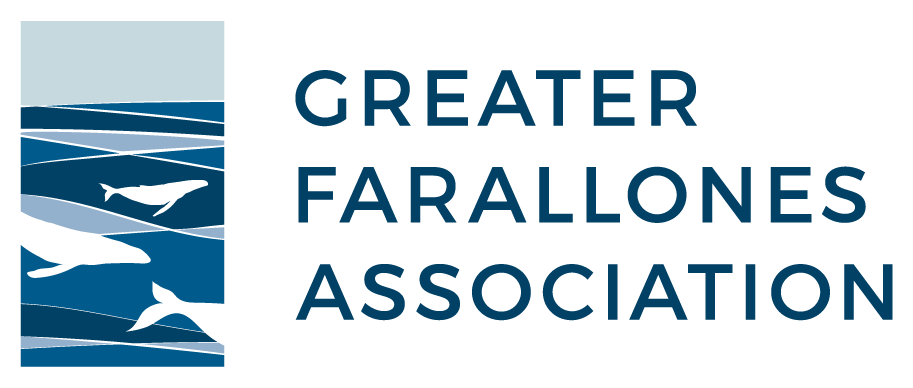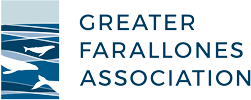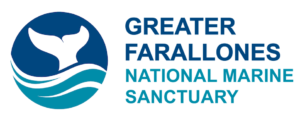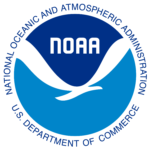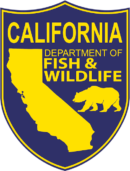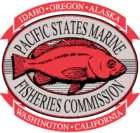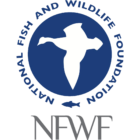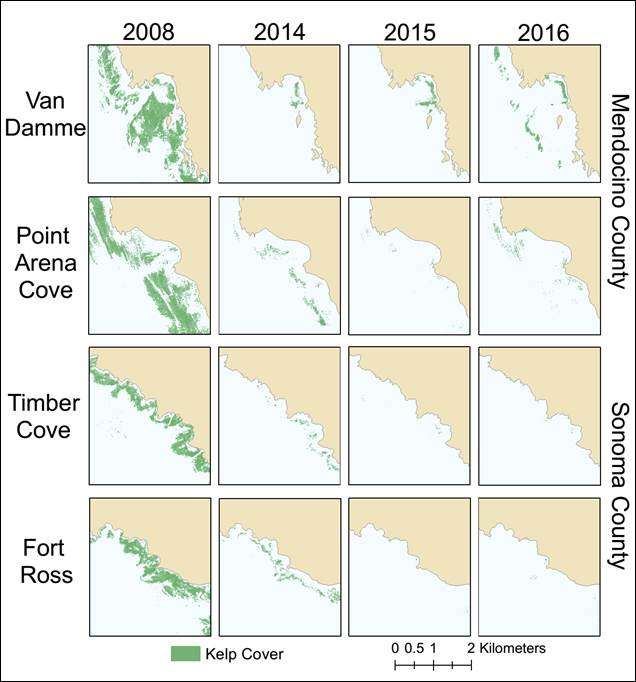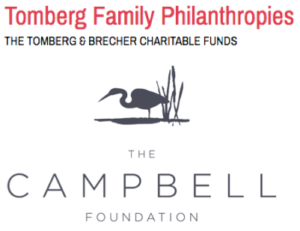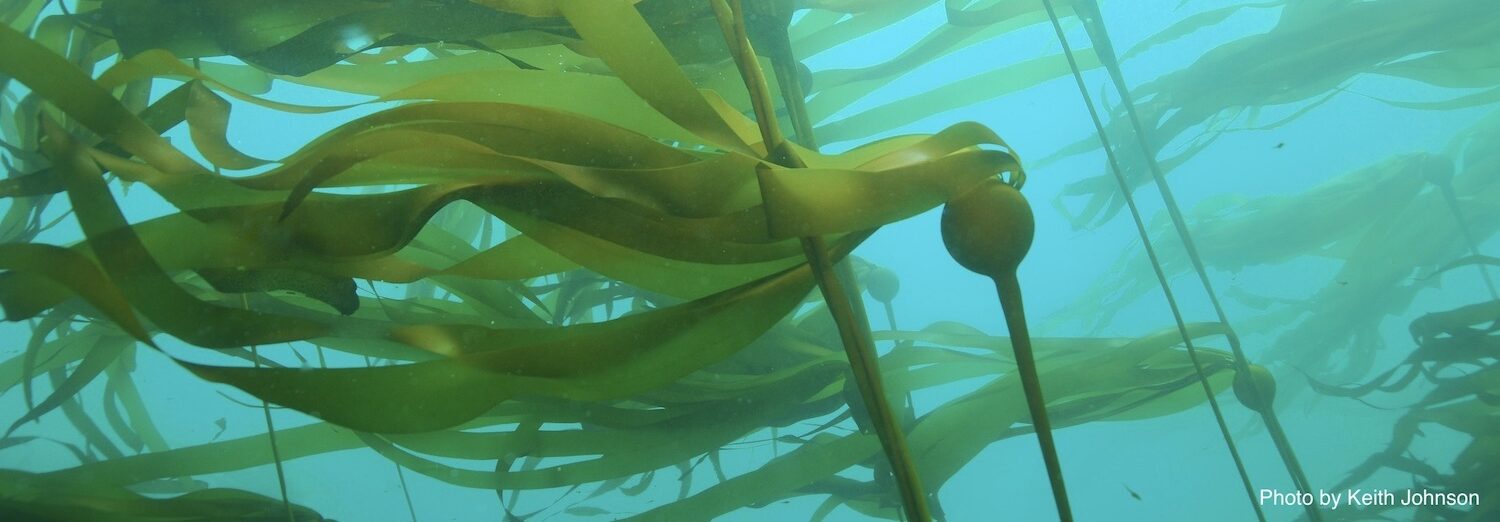
The Greater Farallones Kelp Restoration Project is a joint project of NOAA’s Greater Farallones and Cordell Bank National Marine Sanctuaries (Sanctuaries) and Greater Farallones Association (Association), in partnership with various groups, communities, and agencies (listed below). The goal of the project is to restore lost kelp forest habitat along the northern California coastline within Greater Farallones National Marine Sanctuary, and enhance the habitat’s resilience to climate impacts for future protection.
Through this project, we investigate and implement opportunities for active bull kelp restoration, monitoring, research, and community engagement. Project activities are guided by the strategies outlined in the Sonoma-Mendocino Bull Kelp Restoration Plan (the Restoration Plan, formerly Sonoma-Mendocino Bull Kelp Recovery Plan), a guidance document created through input from scientific experts, diverse stakeholders, and the public through the Sanctuary’s Advisory Council, to address the extensive loss of bull kelp forests along the Sonoma and Mendocino counties coastline. Learn about the development of the Restoration Plan on the Kelp Recovery Working Group page.
View the Greater Farallones National Marine Sanctuary Kelp webpages.
To learn more about this project, contact Rietta Hohman, Kelp Restoration Project Manager, at rhohman@farallones.org.
To join quarterly Greater Farallones Kelp Restoration Network meetings (accessible by phone and video), contact Rietta Hohman at rietta.hohman@noaa.gov. See Stay Informed below for more information about the Network.
Bull Kelp Forests in Northern California
Kelp forests are recognized as highly dynamic ecosystems that support dense populations of fishes, invertebrates, and other algal species, and play a role in the carbon cycle. Bull kelp (Nereocystis luetkeana) is the dominant kelp species in Greater Farallones National Marine Sanctuary and the most abundant in the nearshore Sanctuary waters along Sonoma and Mendocino counties. It grows at depths of around 6 feet to 60 feet and attaches to bedrock reefs and boulder fields.
Kelp forests are critical habitats for supporting fisheries on the West Coast. Kelp provides habitat for threatened, protected, and endangered species like abalone and southern sea otters in Monterey and increases local biodiversity. Kelp beds also form habitats for juvenile fishes, which hide amongst kelp stalks. When it detaches and washes ashore, it becomes a food source for kelp flies, beach hoppers, and various insects. Birds such as snowy plovers, whimbrels, black phoebes, and black-bellied plovers feast on the organisms that live in the beach wrack.
Similar to terrestrial rainforests, bull kelp contributes to climate resiliency by capturing carbon from the atmosphere and exporting the carbon to deep-sea environments for the long term. Numerous natural impacts and human activities affect kelp forest environments, and unfortunately, due to a combination of stressors, kelp forests in northern California have declined by over 90% the past decade.
The Sanctuaries and the Association, alongside a multitude of agency, nonprofit, fisheries, community, and tribal partners, are working to restore and build resilience for sustaining a healthy, functional kelp forest ecosystem within Greater Farallones National Marine Sanctuary.
What Caused the Rapid Decline of Northern California Bull Kelp Forests?
A few different factors caused a “perfect storm” of stress on the ecosystem. The Sea Star Wasting Syndrome caused the severe decline of the sunflower star (Pycnopodia helianthoides), a primary predator of urchins, from the ecosystem after 2013. A vast multi-year marine heatwave in the North Pacific (dubbed “the Blob”) was quickly followed by an exceptionally strong El Niño during 2014-2016, creating conditions that limited nutrients essential for kelp growth. In the absence of a primary predator and undeterred by warming ocean temperatures, the local purple urchin population exploded to densities 60 times greater than the historical average. These urchins will quickly chew through kelp stipes and suppress new kelp growth, leading to widespread and rapid kelp forest decline.
Impacts on Coastal Communities
Since bull kelp is an annual species, even just one year of suppressed growth and reproduction can hinder the entire population. We are now heading into the seventh year of severe kelp loss on the north coast. The extended loss of kelp forests has led to an 80% decline of the commercial red urchin fishery, a $3 million exvessel value, and to the complete closure of the recreational red abalone fishery, a $44 million non-market value. Urchin barrens in other areas have been documented to last for decades, as urchins can survive on extremely small amounts of food and are even able to shrink in size to reduce energy requirements.
The Association and Sanctuaries are partnering with the Fort Ross Conservancy to conduct outreach in the Fort Ross community, sharing information about kelp forest restoration and project activities. The communities adjacent to our project sites are ones most impacted by the kelp loss. Our goal is to reach out to and engage these communities in this project as we navigate it over the next five or more years. Through collaborating with the Conservancy on outreach projects, partnering with local tribes such as the Kashia Band of Pomo Indians to bring youth education programs featuring kelp forest to Kashia schools, bringing kelp-themed education programs to Title 1 schools in Sonoma and southern Mendocino, involving local commercial divers in the project, and more, we aim to make this a transparent and collaborative project.
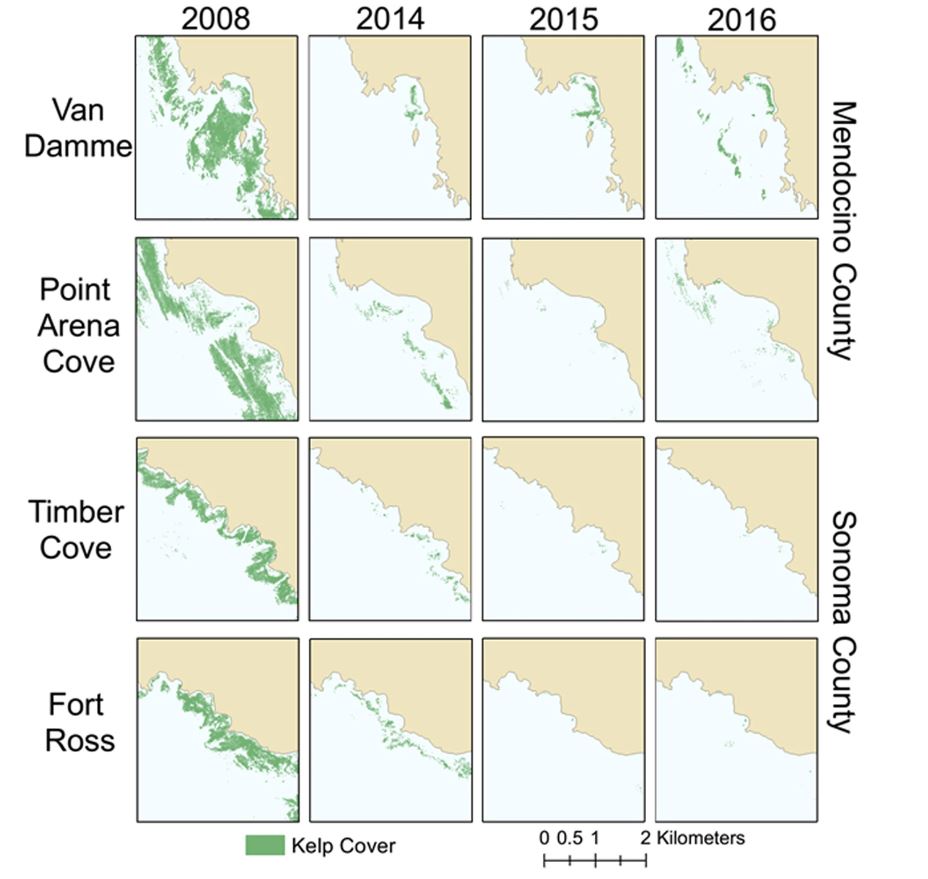
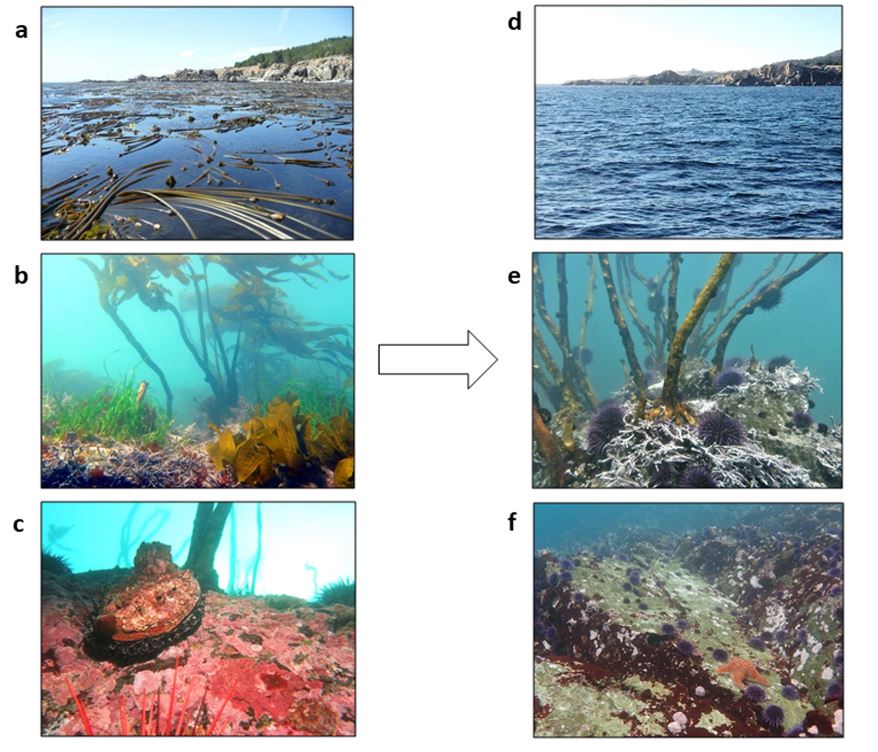
Figure 1. Maps showing greater than 90% reduction of kelp canopy at four important abalone fishery sites in Sonoma and Mendocino counties after 2014 (Rogers-Bennett and Catton 2019).
Figure 2. Ecosystem shifts observed for kelp forest canopy (top), subcanopy (middle), and benthos (bottom), pre-impact (a–c) and post-impact (d–f) (Rogers-Bennett and Catton 2019).
Restoration of Bull Kelp Forest in Greater Farallones National Marine Sanctuary
Greater Farallones and Cordell Bank National Marine Sanctuaries and Greater Farallones Association, alongside a multitude of agency, nonprofit, fisheries, and community partners, are working to restore and build resilience for sustaining a healthy, functional kelp forest ecosystem in the Sanctuary.
Selecting Key Sites for Restoration
The project team has identified four key sites in Greater Farallones National Marine Sanctuary that are most ideal for restoration efforts: Fort Ross Cove, Timber Cove, Ocean Cove, and Stillwater Cove. These sites were selected among those recommended in the stakeholder-informed Restoration Plan. Uncrewed Aerial Systems (UAS) (or drone) surveys conducted post-decline to map current kelp canopy cover are coupled with an investigation of historical aerial imagery from plane-based surveys to inform site selection: areas of kelp resilience and persistence in the Sanctuary, where current kelp growth exists within areas of high historical persistence. We are focusing urchin removal and outplanting within these sites, both to protect areas of new kelp forest growth and capitalize on elements of natural kelp forest resilience for restoration. In 2021 and 2022, we led a restoration site assessment to investigate the subtidal ecology at these sites to determine urchin density, evaluate community structure and identify natural urchin barriers, to aid planning and implementation at each individual site.
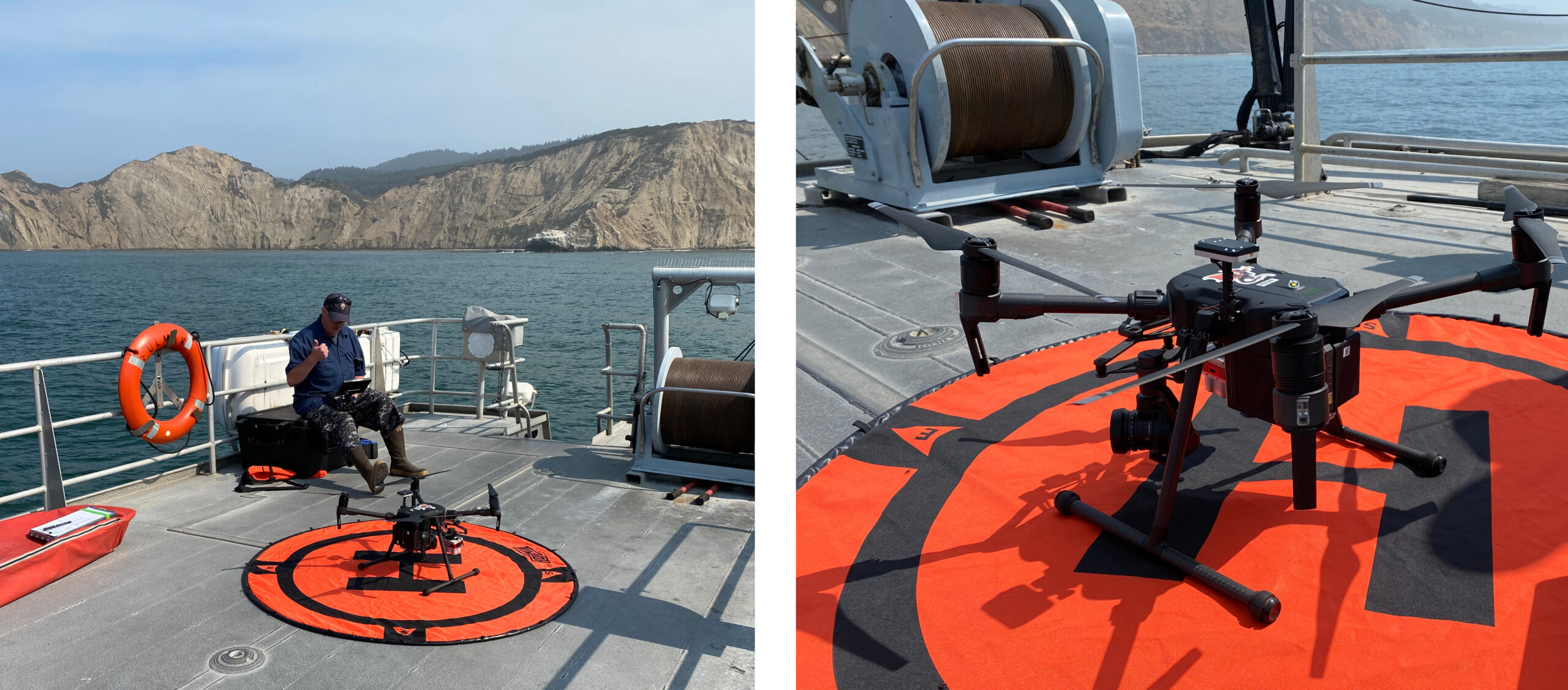
Pilot Pat Iampietro preparing for drone launch from the R/V Fulmar to map kelp canopy. Photos by Angela Zepp, GFA.
What Is the Goal and How Do We Plan to Accomplish It?
The overarching goal of the Greater Farallones Kelp Restoration Project is to restore resilient kelp habitat by establishing a network of kelp forest oases along California’s north coast that can provide habitat for invertebrates and fishes and supply spores for surrounding areas, facilitating broad-scale recovery of kelp forests in the Sanctuary. We aim to achieve this through a combination of comprehensive science-informed methods including reduced grazing pressure, kelp outplanting, and ecological monitoring over the course of approximately five years.
In 2023, we will begin reducing grazing pressure at the restoration sites in partnership with local commercial divers. This will create cleared areas where bull kelp growth can occur naturally and be supplemented by outplanting. We are partnering with Moss Landing Marine Lab (MLML) and Sonoma State University (SSU) to develop practical and cost-effective techniques for enhancing recruitment of bull kelp. By pairing kelp enhancement with urchin removal efforts, we increase the availability of spores within and nearby the restoration area and reduce the probability that young sporophytes will be consumed by grazers.
Throughout the project, we will work with federal, state, fisheries, and academic partners to closely monitor urchin density at the restoration sites in comparison with untreated reference and control sites. Ecosystem monitoring surveys will also assess the recovery of invertebrate, fish and algal species in the project area; as well as annual percent cover of bull kelp canopy at the restoration and reference sites. A robust monitoring regime of underwater surveys and kelp canopy assessments will enable us to track the progress of restoration efforts effectively and comprehensively, understand the connectivity between regions, and assess overall kelp forest ecosystem health within the Sanctuary.
While working to restore kelp forest in the Sanctuary, we have a unique opportunity to better understand potential climate benefits of restoring kelp forest habitat. Through a National Coastal Resilience Fund grant from the National Fish and Wildlife Foundation (NFWF), alongside our comprehensive restoration project, we will study the drivers that contribute to historical kelp forest resiliency in the face of ongoing and unpredictable climate impacts; and learn more about kelp’s capacity to take in and store atmospheric carbon. In partnership with Greater Farallones, Cordell Bank, and Monterey Bay National Marine Sanctuaries, California Department of Fish and Wildlife, Stanford University, and Scripps Institution of Oceanography, we are conducting habitat and kelp canopy surveys and correlating them with environmental and climate change-related factors using sensors for dissolved oxygen, temperature, salinity, and pH; and conducting a nearshore hydrodynamics study to investigate the influence of restored kelp forests on coastal resilience. These data will contribute to a decision-making framework for kelp restoration in the Sanctuary and other national marine sanctuaries and marine protected areas (MPAs).
Kelp restoration is a new and emerging field and we are continuously learning about novel approaches, benchmarks of success, and lessons learned. What we learn during this project will be shared widely to help advance the field and inform future kelp restoration efforts. Details about project methods and outcomes will be published with open access.
Stay Informed
The Greater Farallones Kelp Restoration Network is hosted by Greater Farallones Association. The Network brings together stakeholders, researchers, fishermen, tribes, nonprofits, industry, and resource managers across California. The goal of the Network is to share information about kelp forest research, restoration, conservation, management, culture, art and community engagement and to foster connections with diverse audiences along the north coast of California and the West Coast.
Network meetings are open to the public and held quarterly, and accessible by phone and video. If you would like to inquire about presenting at an upcoming meeting or join the Network’s email list to receive information about upcoming meetings, please contact rietta.hohman@noaa.gov.
Project Partners
The Greater Farallones Kelp Restoration Project has and will continue to involve myriad partners across state and federal agencies, communities, nonprofits, tribes, academic institutions, and fisheries in various aspects and stages of the project including research, planning, outreach, education, and implementation. See below for a full list of project partners.
Project partners:
- Greater Farallones Association
- NOAA’s Greater Farallones and Cordell Bank National Marine Sanctuaries
- NOAA Fisheries Office of Habitat Conservation
- NOAA’s Monterey Bay National Marine Sanctuary
- NOAA’s Channel Islands National Marine Sanctuary
- California Department of Fish and Wildlife
- National Marine Sanctuary Foundation
- California Ocean Science Trust
- Fort Ross Conservancy
- State Parks
- National Park Service
- The Nature Conservancy
- Sonoma State University
- California State University Monterey Bay
- Woods Hole Oceanographic Institution
- San Jose State University Moss Landing Marine Lab
- UC Davis Bodega Marine Lab
- UC Davis Coastal and Marine Sciences Institute
- UC San Diego Scripps Institution of Oceanography
- UC Santa Cruz
- UC Los Angeles
- Stanford University
- University of Wisconsin Milwaukee
- Kashia Band of Pomo Indians
- Sherwood Band of Pomo
- Local commercial divers
Funders who help make this work possible:
